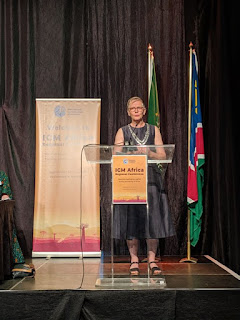The shocking deaths within the last six months of two child brides from the Yemmen ,one from s
exual intercourse related haemorrhage five days after her forced marriage and one from
childbirth, provide a graphic and tragic illustration of the disastrous circumstances that can accompany female reproductive lives. Their stories are testimony to the difficulties that girls and women face in living their lives in ways that are empowered and valued.
Thinking about these young girls and their lack of choices, driven by culture, religion, standard of education, political will and misogyny, led me to consider what is the optimal environment for childbearing?
Optimal Environmental Conditions For Childbearing
In an optimal social environment, childbearing women, babies and children are highly valued in ways that are quite tangible. The vital contribution that mothers and babies make to society is recognised as fundamental to the health and wellbeing and indeed the future of society. The needs of mothers and babies needs are at the heart of government policies and social considerations. The society as a whole expects every workplace to be family friendly and therefore it is the norm. To be considered family friendly, a workplace has on-site childcare, flexible working hours and breastfeeding facilities as a matter of course. Breastfeeding is a normal, accepted part of childbearing. Breastfeeding in public is normal and there are easily accessible facilities in every large department store, recreational and public utility for breastfeeding women and their babies. All children are educated at school about child development, contraception, maternity care, pregnancy, birth and breastfeeding. In our optimal social environment, women have true choice about pregnancy. If a woman chooses to stay childless, that is accepted as a valid choice. Women are not pressured in any way by the media or their social network. Women have access to the contraceptive that suits their needs. There is general agreement that no women should have to bear a child that is unwanted. There is an appreciation that an unwanted pregnancy creates unacceptably high levels of suffering for the woman and for the individual who is born unwanted. Women’s self determination is valued and encouraged. Every pregnant woman is in a stable and loving relationship and has at least five people that she knows, love and support her in emotional and in practical ways.

Every woman who wants to become pregnant is financially secure. She is at her best nutritionally, physically and emotionally with the help of free and easily accessible holistic pre-conceptual health care. A visit to the pre-conceptual health centre is a normal thing to do for a couple planning a pregnancy. At these centres, couples build on their knowledge gained from their school education and learn more about prenatal and infant development. The role of nutrition, stress management and exercise in optimising the prenatal environment for their future pregnancy is explored. A conscious approach to conception, pregnancy, birth and childrearing is treasured. Couples go to courses about relationships and parenting to ensure they are well equipped to provide a loving environment for their own growth and development as partners and parents. Families are encouraged to be supportive of one another as family friendly practices are part of the educational process in schools and work places.
There are women centred health services in neighbourhood centres where pregnant women can access relationship based midwifery care and an integrated perinatal service. The integrated perinatal service includes midwives, doctors, social workers, psychologists, mental health nurses, psychiatrists, dieticians, early childhood nurses and paediatricians. According to the individual woman’s needs, members of the health care service work with the women as an integral part of the team. Women can choose to give birth at these centres or at home. If there is some condition requiring close medical attention and care in labour, the woman can birth at the tertiary referral centre with her midwife and other team members support.

The woman and her partner are supported by their midwife and a home help person for up to six weeks after their baby is born.
Of course the optimal environment for childbearing that I have described can be seen as a 'pipe dream' a fanciful idea that is unattainable. I suggest that for our species to become all it can be, humanity needs to look seriously at how women and children are treated in this world. We will only fulfill our potential if we start taking proper care of women and children and ensuring there is an optimal environment for childbearing. The plight of young girls in the Yemmen is a blight upon humanity. However, the Yemmen is not the only place where being female is a liability.
Everyone needs to take responsibility for the position of females in society. Everyone has to do their bit to improve the social structure. Nothing changes until we change.








